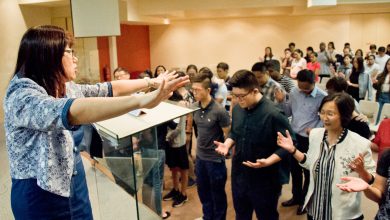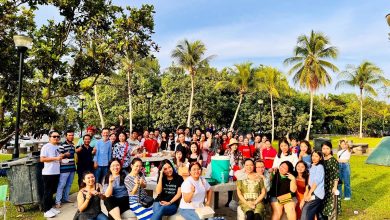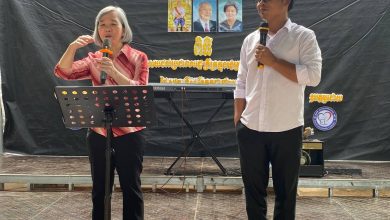Reaching the Unreached

What are unreached people groups? How can you reach them? Rev James Singh gives us three steps.
About three decades ago, the worldwide church was introduced to the 10/40 Window. It gave the church better insights into world missions. Effectively, the 10/40 Window is the geographical area spanning from North Africa, across the Middle East towards Asia, approximately between 10 degrees north and 40 degrees north latitude. Two-thirds of the world’s population live in the 68 nations of the 10/40 Window. The 10/40 Window is often called “The Resistant Belt”. 95% of these four billion people are unreached. 87% of these four billion people are the poorest of the poor.
Many people in this zone have not heard the Gospel of Jesus Christ. Most countries in this window are un-evangelized or unchurched as resources are limited.
Today, many churches and missionary organizations have embarked on long-term projects targeting nations within the10/40 Window. But there is a conundrum. The outreaches have been centred around the capital cities and major towns, forgetting the remote places. Whilst reaching the city is essential, it should be a strategic base for reaching the smaller towns. In this article, I will give you three steps, though not conclusive, that could be a guide to embarking on mission work in this area of operations.
I want to challenge you to adopt a long-term holistic approach in your mission portfolio.
- The Scope: Building a mission portfolio
The scope for missions has to be holistic: spiritual and social. Many people living in these areas have social and financial needs. I want to challenge you to adopt a long-term holistic approach in your mission portfolio.
When God builds His church, He sovereignly places specific skill sets, gifts, or talents with people. Do a quick scan of your church members and see what those skill sets are. Those talents and skill sets become a litmus guide on how you can get involved in missions.
For example, if your church has a heightened emphasis on fasting and prayer, how about embarking on prayer missions? Training can be done through online or in-person modalities on how the church can mobilize intercessors for His Kingdom in the nations or teach them to organize a ‘prayer walk’. In a recent conversation with a pioneer church planter, it came to light that prayer walking is one discipline that has been watered down over the years. If one can put a thousand to flight, how about two or three?
If your church has medical professionals, how about embarking on medical missions to target unreached areas? Many areas today lack medical services, and this could be a tool that can be used for evangelism. In fact, God has designed the Church (the ‘called out ones’) to manifest His wisdom, power, and authority; and what better way of demonstrating this than in situations which supersede what earthly governments are capable of?
What if there is no specific focus in your church? Have you considered networking? - Networking
Assemblies of God churches worldwide have many resources for missions. We can combine resources to further God’s Kingdom. As God has given each church certain skill sets, let us acknowledge them and activate them to bless unreached people groups. Engage with other Assemblies of God churches with a mission portfolio and see how you can collaborate for the furtherance of His kingdom on earth. All hands on deck! - Strategy
Times and seasons are changing. Borders are closing, and some are opening. Scrutiny of religious movements has taken a toll, and some nations are tightening their borders to foreign missions or front-line Christian organizations. What happens when these restrictions hit your plans? We need to have a quick workaround or change our contact methods.
Recently, a pastor approached me and asked for advice regarding a particular situation he was experiencing with his missions department. He shared that over the last few years, they had poured huge amount of resources into a particular nation, training and equipping the people so they could reach out to their community. Unfortunately, the doors were tightening up, and it was becoming difficult to make inroads with the Gospel to this nation. He asked for my thoughts on shifting their focus to another people group in another nation.
The Lord gave me the insight to see that the diaspora of this particular people group had now spread across to other countries. If the source nation they are coming from is tightening its borders, we can go to where these people are and reach out to them. A key lesson here: go where your burden leads you and to whom you are called. Doing otherwise might be detrimental to you and those you are trying to reach.
With cross-border workers living in Singapore itself, there is an opportunity to touch their lives and disciple them.
As I was writing this, some nations are tightening their borders, while some doors are opening, some others are closing. In these last days, we desperately need a strategic mind to navigate these difficulties. I believe that one has to discover the best strategy in the region or terrain. A closed door is not a closed chapter.
A key lesson here: go where your burden leads you and to whom you are called.
There is much work to be done. Therefore missions cannot be layered with the pomp and pageantry of comfort. We must seize the opportunities for church-planters and long or short-term missionaries to be stationed in these unreached areas. It’s mission time, and we must get our boots to the ground and reap the harvest.

Rev James Jagjeet Singh, is the overseer of Eagle’s Nest Church and an itinerant Evangelist under the Assemblies of God, Singapore. In this dual office, he carries a prophetic anointing and the fire of the Holy Spirit wherever he goes. His passion is to see revival come upon the churches. He graduated from Assemblies of God Bible College with a Bachelor of Theology. He is married to Rosie, and they have two children, Josiah and Sarabeth




